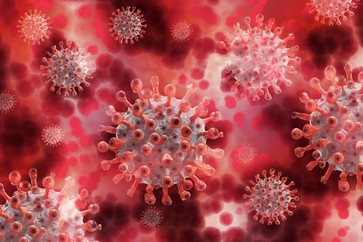|
Information has recently emerged about three powerful synthetic opioids that may be circulating in local and neighboring state’s illicit drug supplies. The three new opioids are isotonitazene, xylazine and brorphine. Street names for each are as follows: “iso” for isotonitazene, “tranq dope” or “anestecia de caballo” (horse anesthetic) for xylazine, and “purple heroin” for brorphine.
In this article released by the Drug Enforcement Administration (DEA), isotonitazine was classified as a Schedule I substance and that 18 investigations between August 2019 and January 2020 identified isotonitazine being present, including seven in Indiana. For additional information on isotonitazine, see this public health alert by the Center for Forensic Science Research and Education (CFSRE).
Xylazine was initially discovered as an antihypertensive agent in 1962, but due to its hazardous side effects it was not approved by the Food and Drug Administration (FDA) for human use. However, the FDA did approve it for veterinary use as an animal tranquilizer, sedative, analgesic and muscle relaxant. Xylazine can be abused by itself but is more frequently taken as an adulterant in heroin, and is most frequently found in a “speedball,” a combination of heroin and cocaine. For more information on xylazine, see this public health alert by CFSRE and this release from the Michigan Regional Poison Control Center.
Brorphine is believed to have a potency similar to fentanyl (50-100 times more than morphine) and has been tied to at least seven deaths across the nation, as well as other non-fatal overdoses. While the street name is “purple heroin,” no actual heroin has been identified in current samples. As of August 2020, brorphine was not controlled under the Controlled Substances act. See this report from the DEA for more information on brorphine.
At this time, the three synthetic opioids are not fentanyl or fentanyl analogs so they cannot be detected by a fentanyl test strip. Additionally, these substances are not included on post-mortem toxicology panels. It is still recommended that naloxone be administered if you suspect someone is overdosing from these substances or another opioid. To learn more about naloxone and how to administer it, visit this site. To find a naloxone distributor near you visit the Indiana OptIN registry here.
 Preliminary numbers released by the Centers for Disease Control and Prevention (CDC) are showing a rise in drug overdose deaths for the first three months of 2020. The data, showing approximately a 10% increase in fatalities, offers the first snapshot of the pandemic’s impact on those struggling with substance use. If this trend continues, the United States could expect to suffer more than 75,500 drug-related deaths in 2020, compared to the 71,125 reported in 2019. The increase in drug-related overdose is not completely unexpected as the pandemic has increased individual’s isolation and limited the ability of many treatment programs to offer a full range of services. Click here for the full provisional drug overdose data from the CDC.
 Earlier this month, the Hamilton Center, a community mental health center, cut the ribbon on a $500,000 state-licensed opioid treatment clinic inside a Plainfield shopping center. The almost 6,000-square-foot clinic will offer comprehensive substance use treatment to adults struggling with heroin or other opioids. Services offered include: case management, individual and group therapy, and medication assisted treatment with methadone.
|